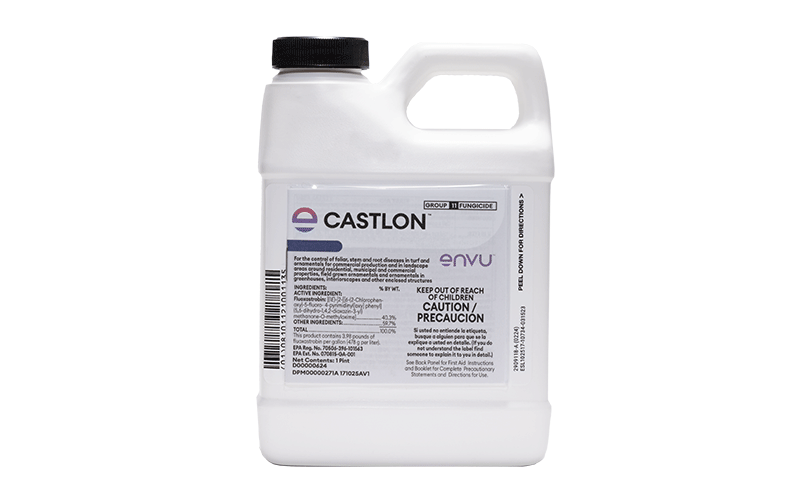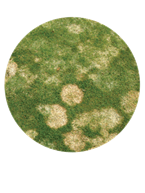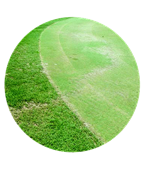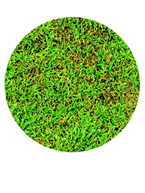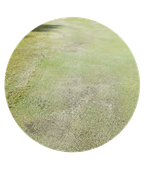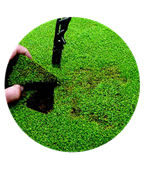The Problem
Brown ring patch (aka ‘Waitea patch’) is a spring and early summer disease of annual bluegrass, rough bluegrass and creeping bentgrass greens. The disease is caused by Waitea circinata var. circinata, a Rhizoctonia-like basidiomycete. The disease is most prevalent on annual bluegrass and on turf that is maintained at putting green height.
What To Look For
Brown ring patch typically appears in the spring with maximum daily air temperatures of 65-85°F. Soil temperatures between 55-60°F are associated with initial disease development. It is more severe on greens that have low nitrogen fertility, and often develops first on areas that are dry or are under other environmental stresses. On annual and rough bluegrass, brown ring patch initially appears as bright yellow rings a few inches to one foot in diameter. Rings can merge together to develop a characteristic “honeycomb” or “scalloped” pattern. Older rings can become brownish-yellow in color and develop a sunken appearance. On creeping bentgrass, rings appear orange-bronze and can also have a sunken appearance. Brown ring patch symptoms may be similar to take-all, summer patch, fairy ring, brown patch (Rhizoctonia solani) or yellow patch (R. cerealis). Laboratory diagnosis is recommended to confirm the identity of the pathogen and choose the correct control measures. If brown ring patch has been confirmed in the past, a quick diagnostic test is to incubate suspected samples overnight in a moist plastic bag. After incubation, active brown ring patch will show up as abundant white-gray mycelia in the upper mat and thatch layer, extending up through the canopy and foliage.
The Solution
Increased nitrogen fertility and adequate water availability are key cultural practices to reduce symptoms of the disease. Reducing thatch and dry areas on greens, surrounds and tees will help lessen disease development. Preventive fungicide applications are recommended when soil temperatures are between 55-60°F. Both Mirage® Stressgard® and Densicor® will provide long-lasting preventive as well as curative control. Brown ring patch is not controlled by thiophante-methyl or other benzimidazole fungicides. Fungicides should be applied in a water volume of 2 gal./1,000 sq. ft. and lightly watered in following application. Curative applications are less effective, and repeated applications may be needed for complete control. Curative applications should be made as soon as symptoms are seen for best results. Addition of polyoxin-D as a tank-mix partner will help with ‘knock-down’ of the disease with Mirage Stressgard or Densicor providing long-term residual control.
Additional resources
| Solution sheet - Brown ring patch |


